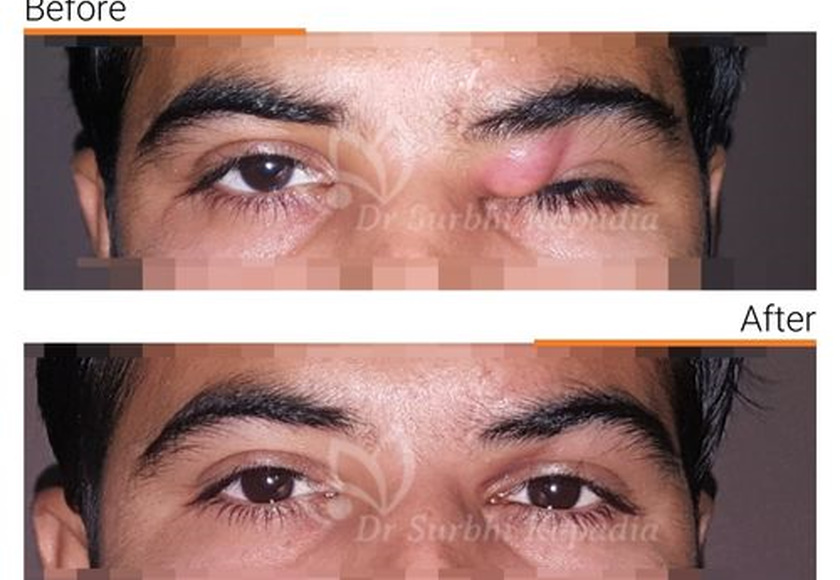|
Getting your Trinity Audio player ready...
|
Glaucoma is a group of eye diseases that can cause irreversible damage to the optic nerve, leading to vision loss or even blindness. It’s often called the “silent thief of sight” because it typically progresses slowly and without symptoms, until significant damage has occurred. Worldwide, glaucoma is the second leading cause of blindness, affecting over 60 million people. Early detection and treatment are crucial to preserving vision.
Let’s learn more about it in detail.
How Do You Get Glaucoma?
Vision loss in Glaucoma occurs when the optic nerve, which connects the eye to the brain, is damaged. This damage is often related to an increase in intraocular pressure (IOP), the pressure within the eye. Normally, a clear fluid called aqueous humor flows in and out of the eye, but if this fluid doesn’t drain properly, pressure builds up. This increased pressure can damage the optic nerve. However, glaucoma can also develop in individuals with normal IOP, highlighting the complexity of the disease.
Who Is at Risk for Glaucoma?
Certain factors can increase your risk of developing glaucoma. These include:
- Age: People over 60 are at higher risk.
- Ethnicity: African Americans, Hispanics, and Asians are more susceptible.
- Family History: A family history of glaucoma increases your risk.
- Medical Conditions: Conditions such as diabetes, high blood pressure, and heart disease are linked to higher glaucoma risk.
- Eye Conditions: Severe myopia (nearsightedness), thin corneas, and previous eye injuries or surgeries can increase risk.
Understanding these risk factors can help in early diagnosis and preventive measures.
Types of Glaucoma
There are several types of glaucoma, each with distinct characteristics:
- Primary Open-Angle Glaucoma (POAG): The most common type, accounting for about 90% of cases. It develops slowly and painlessly.
- Angle-Closure Glaucoma: Also known as acute or chronic angle-closure or narrow-angle glaucoma, this type is less common and occurs when the drainage angle in the eye is blocked.
- Normal-Tension Glaucoma: Occurs when optic nerve damage happens despite normal eye pressure. The exact cause is unknown.
- Secondary Glaucoma: Caused by another medical condition, such as diabetes or cataracts.
- Congenital Glaucoma: A rare form that is present at birth, often due to abnormal development of the eye’s drainage system.
Symptoms of Glaucoma
Glaucoma is often asymptomatic in its early stages, making regular eye exams essential. However, as the disease progresses, symptoms may include:
- Peripheral Vision Loss: Gradually losing side vision is often one of the first signs.
- Tunnel Vision: In advanced stages, only central vision remains.
- Severe Eye Pain: Particularly with acute angle-closure glaucoma.
- Nausea and Vomiting: Associated with severe eye pain.
- Blurred Vision: Vision may become hazy or blurry.
- Halos Around Lights: Seeing rainbow-colored circles around lights can be a sign of acute glaucoma.
- Redness in the Eye: Persistent redness can be a symptom.
What Causes Glaucoma?
The exact cause of glaucoma isn’t fully understood, but it is generally linked to increased eye pressure. This pressure damages the optic nerve, which is essential for vision. Factors that contribute to high eye pressure include:
- Blocked Drainage in the Eye: If the eye’s drainage canals become clogged, fluid builds up.
- Overproduction of Aqueous Humor: The eye produces too much fluid.
- Poor Blood Flow to the Optic Nerve: Can lead to nerve damage.
- Genetics: Family history plays a significant role.
Risk Factors for Glaucoma
Several risk factors can increase the likelihood of developing glaucoma:
- Age: The risk increases with age, especially after 60.
- Ethnicity: African Americans are more likely to develop glaucoma than Caucasians, and they tend to get it at a younger age.
- Family History: If glaucoma runs in your family, your risk is significantly higher.
- Medical Conditions: Conditions like diabetes and high blood pressure increase your risk.
- Physical Eye Characteristics: Thin corneas, high myopia, and eye injuries can increase the risk.
- Prolonged Use of Corticosteroids: Long-term use of these medications can lead to glaucoma.
Treatment for Glaucoma
Early detection and treatment are crucial in managing glaucoma and preventing vision loss. Treatment options include:
- Medications: Eye drops are often the first line of treatment. They work by reducing eye pressure, either by decreasing the production of fluid or improving its outflow.
- Laser Therapy: Procedures such as laser trabeculoplasty can help drain fluid from the eye.
- Surgery: When medications and laser therapy aren’t effective, surgical procedures like trabeculectomy, drainage implants, or minimally invasive glaucoma surgery (MIGS) can be used to create new drainage pathways.
- Lifestyle Changes: Maintaining a healthy lifestyle can help manage eye pressure. This includes regular exercise, a balanced diet, and avoiding activities that significantly raise eye pressure.
- Regular monitoring and follow-up with an eye specialist are essential to manage the condition effectively.
How to Find the Best Eye Specialist?
Finding the right eye specialist is crucial for managing glaucoma. Here are some tips to help you find the best care:
- Experience and Credentials: Look for a specialist with extensive experience in treating glaucoma. Board certification and membership in professional organizations are good indicators of expertise.
- Referrals and Reviews: Ask for recommendations from your primary care doctor or other healthcare providers. Patient reviews can also provide insights into the specialist’s care and service quality.
- Technology and Facilities: The best eye hospitals have state-of-the-art equipment and facilities for comprehensive eye care.
- Personal Comfort: Choose a specialist with whom you feel comfortable discussing your condition and treatment options.
Conclusion
Glaucoma is a serious eye condition that requires early detection and ongoing management to prevent vision loss. Understanding the symptoms, causes, types, and treatment options can empower you to take proactive steps in managing your eye health. If you’re at risk or experiencing symptoms, don’t wait—schedule an eye exam with a specialist. With the right care and treatment, many people with glaucoma can maintain their vision and lead healthy lives.
FAQs
Can glaucoma be cured?
No, glaucoma cannot be cured, but it can be managed effectively with early detection and proper treatment to prevent vision loss.
How often should I get my eyes checked for glaucoma?
Adults over 40 should have an eye exam every 2-4 years, and those over 60 should have yearly exams. If you have risk factors, more frequent exams are necessary.
Are there any lifestyle changes that can help with glaucoma?
Yes, regular exercise, a healthy diet, and avoiding smoking can help manage eye pressure and overall health.
Can glaucoma lead to blindness?
Yes, if left untreated, glaucoma can lead to irreversible vision loss and blindness.
What are the early warning signs of glaucoma?
Early stages of glaucoma often have no symptoms. Regular eye exams are crucial for early detection. Symptoms like peripheral vision loss or seeing halos around lights can indicate more advanced stages.
![]()





